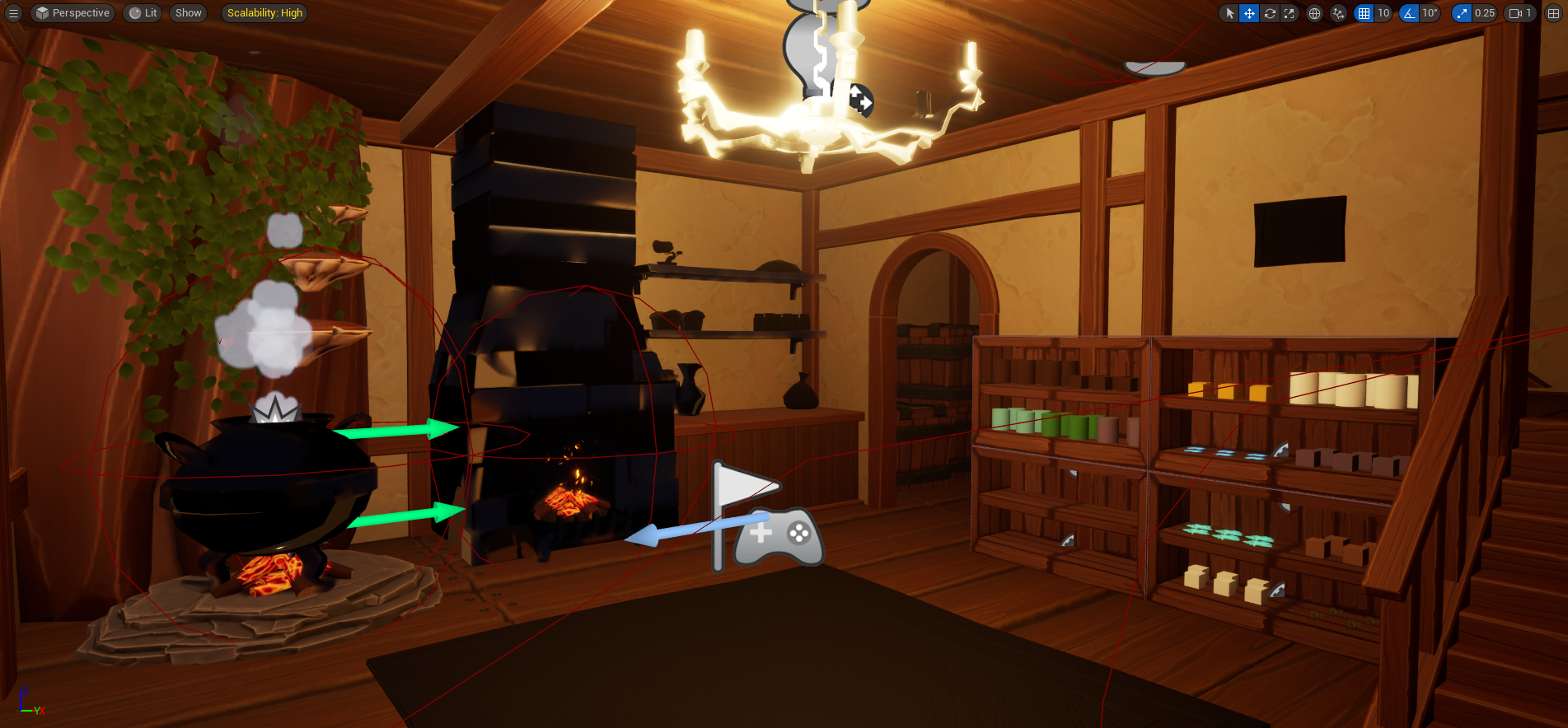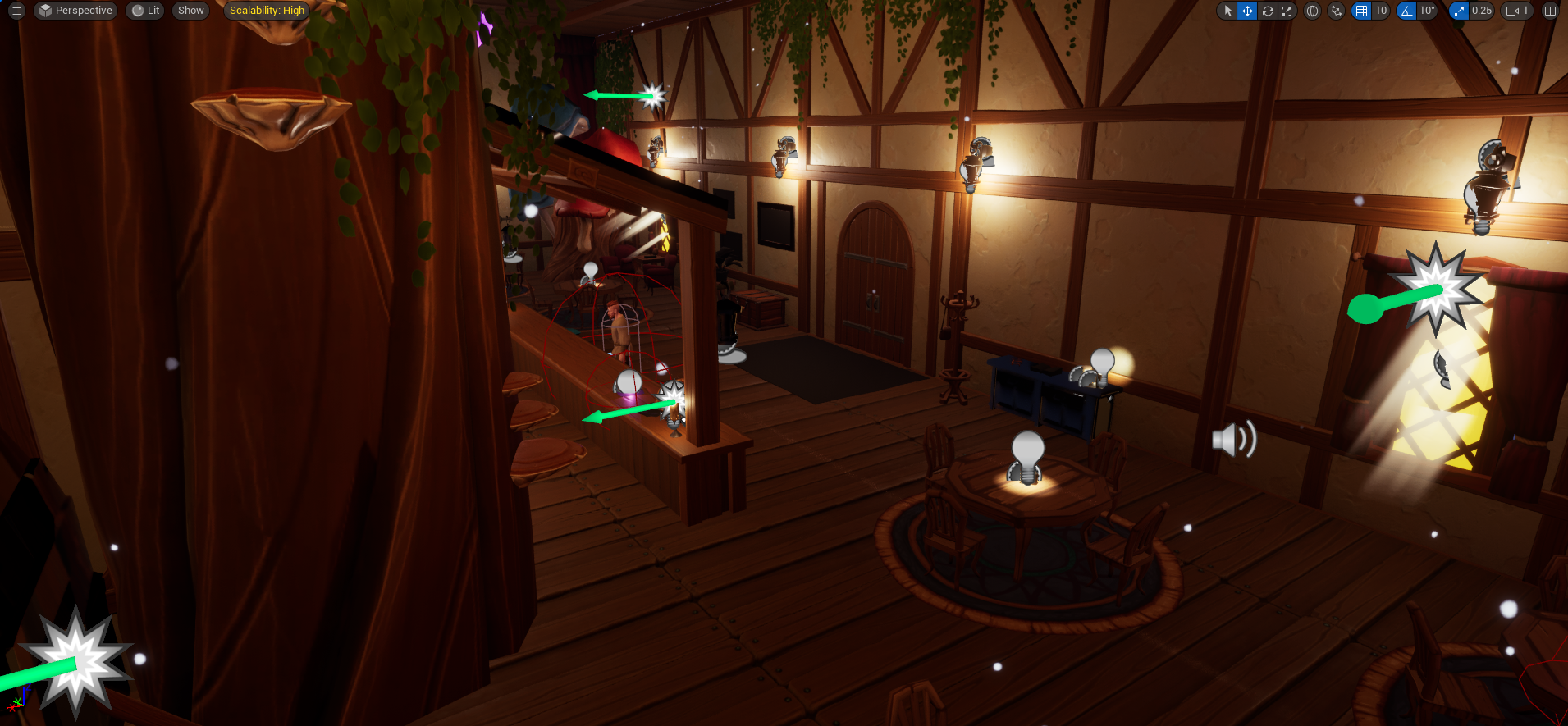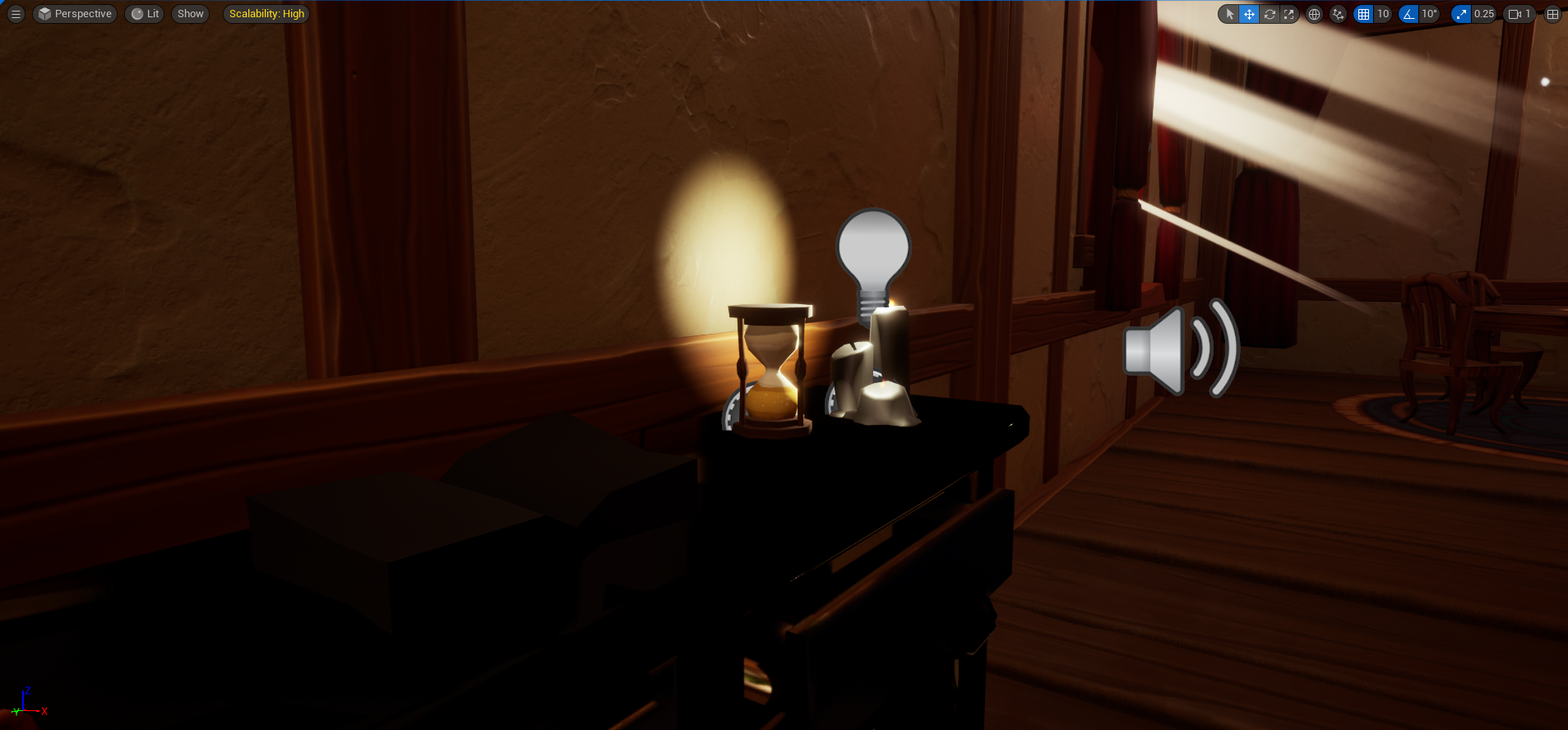Process
Planning
When I began designing the system, I knew it needed to be organized under a single blueprint. This would make it easier for other Actors to communicate with it and contain all of the necessary definitions in one place. My approach was to build the mechanic step by step. I started with a simple interaction that increased a value that would eventually represent time. Once that basic function worked, I expanded it by repeating the process with multiple arrays, creating definitions for the date, time, and seasons.
Iteration
The system started as a simple counter: each interaction increased a value until it reset. Once that worked, I tied the process to an event for efficiency and gradually expanded it into arrays representing time, seasons, and moon phases. This allowed actors and actions to respond dynamically as values changed. From there, I built a single blueprint to manage time flow, triggered by player interactions. The framework grew step by step, evolving from a basic mechanic into a scalable system where time progression could influence objects, behaviors, and world events.
Outcome
What we got at the end was a working system that was modular in its design and could be easily attached to multiple actors and scripts


